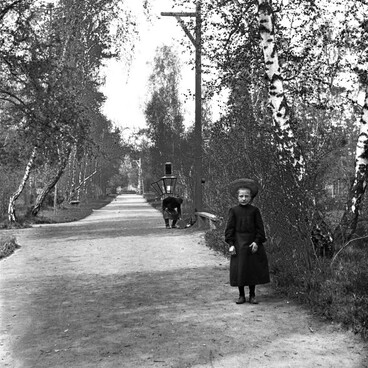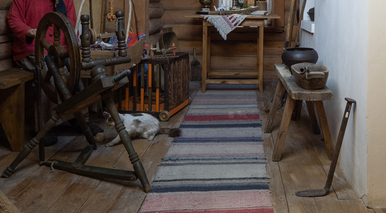Since ancient times, tooth powder has been used for tooth brushing. The ancient Romans made it of crushed crab carapace, eggshells, oyster shells, which were burned, ground into dust, and mixed with honey and other beneficial ingredients. The first tooth powder, close to modern, appeared in the UK at the end of the 18th century — it was made of crushed chalk, soap flakes, and mint. Toothpaste, as we are more familiar with, entered the daily use of people relatively recently — in 1837. That year, The Colgate Company introduced the first paste in a jar to the American market. Before its appearance, people brushed their teeth with powder.
The museum collection presents a box of tooth powder, released in the late 19th — early 20th century. Tooth powder appeared in the Yenisei province much later than in other Russian regions. Initially, it was used only by wealthy and educated representatives of Siberian society — nobles and merchants.
Chalk-based dental powders were widely used. The use of chalk was suggested by dentist John Harris in the middle of the 19th century. The first tooth powders were made in pharmacies following special recipes, then industrial production was developed. Chalk and magnesium carbonate made the basis of the product. For a change, finely ground flower leaves were added to the tooth powder, and the medicinal properties of the powder were given by the fruits of medicinal plants: cinnamon, sage, violets.
Later, these additives were replaced with various essential oils. Despite the fact that the composition of powders was developed by doctors and chemists, they often contained harmful abrasive substances, which the modern world long abandoned. For example, the first powders contained brick dust, crushed porcelain, and clay fragments. They also included soap.
Despite this, tooth powder spread quite quickly in Siberia. Residents of the Yenisei province also used traditional folk hygiene products. For example, they chewed the resin of needle-leaved trees (soft resin), and also rubbed their teeth with birch charcoal, which had an excellent whitening effect.
The museum collection presents a box of tooth powder, released in the late 19th — early 20th century. Tooth powder appeared in the Yenisei province much later than in other Russian regions. Initially, it was used only by wealthy and educated representatives of Siberian society — nobles and merchants.
Chalk-based dental powders were widely used. The use of chalk was suggested by dentist John Harris in the middle of the 19th century. The first tooth powders were made in pharmacies following special recipes, then industrial production was developed. Chalk and magnesium carbonate made the basis of the product. For a change, finely ground flower leaves were added to the tooth powder, and the medicinal properties of the powder were given by the fruits of medicinal plants: cinnamon, sage, violets.
Later, these additives were replaced with various essential oils. Despite the fact that the composition of powders was developed by doctors and chemists, they often contained harmful abrasive substances, which the modern world long abandoned. For example, the first powders contained brick dust, crushed porcelain, and clay fragments. They also included soap.
Despite this, tooth powder spread quite quickly in Siberia. Residents of the Yenisei province also used traditional folk hygiene products. For example, they chewed the resin of needle-leaved trees (soft resin), and also rubbed their teeth with birch charcoal, which had an excellent whitening effect.



